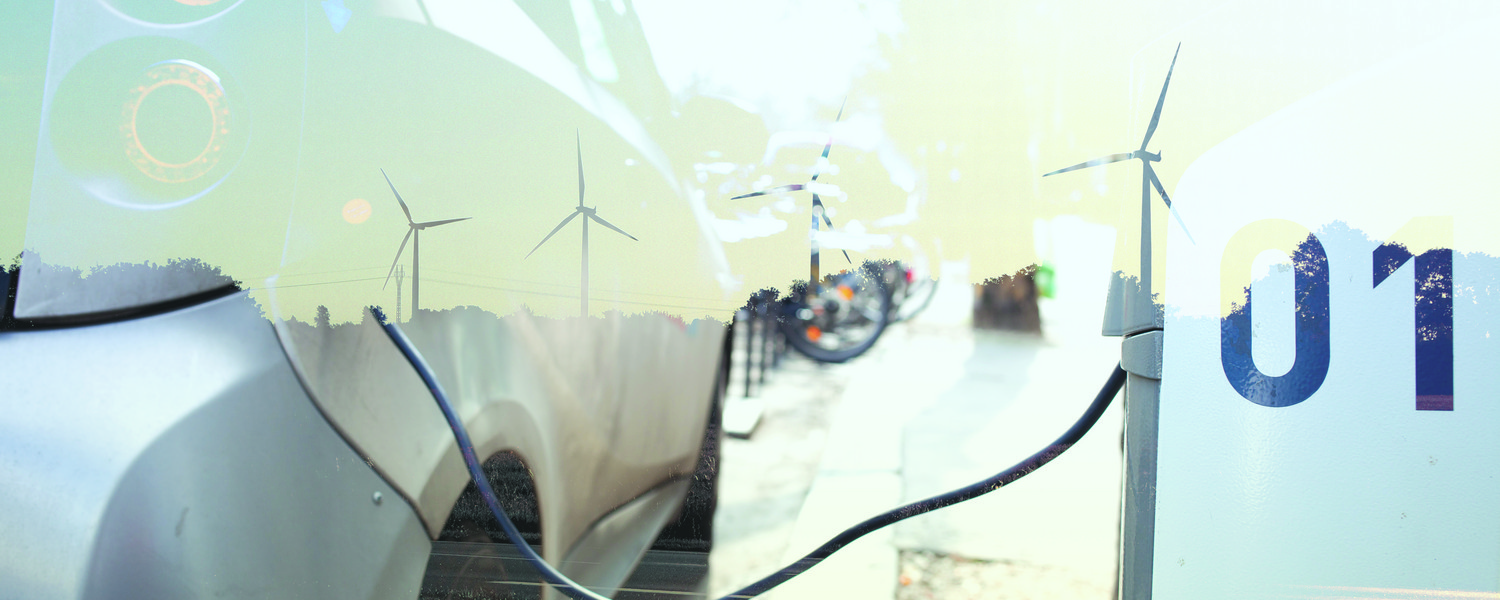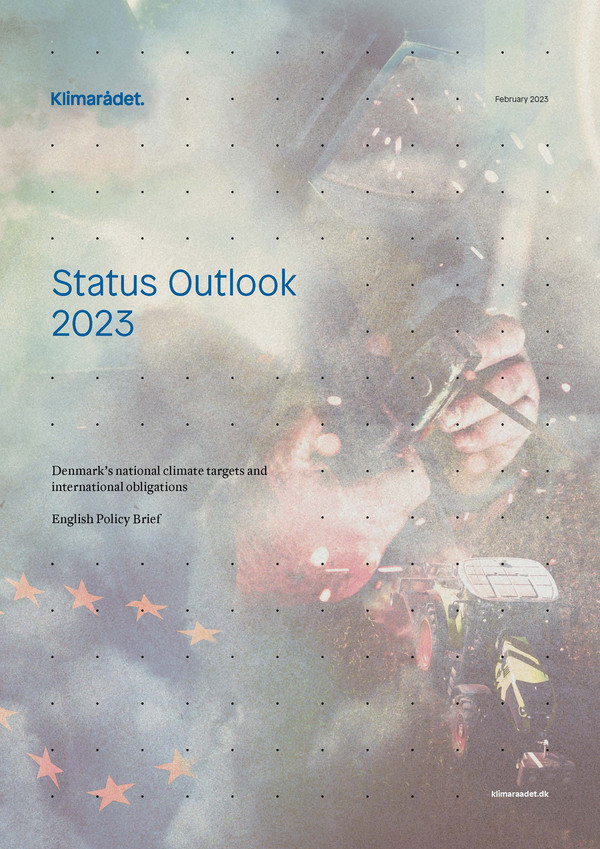
Status Outlook 2021

Preface
The Danish Council on Climate Change provides recommendations on climate initiatives in the transition to a low-carbon society. They are based on independent professional analyses, centered on the overall objective of how we can make a cost-efficient transition. The objective is a future with very low emissions of greenhouse gasses while maintaining social welfare and development.
Introduction, conclusions and recommendations
Den nye klimalov fra juni 2020 pålægger Klimarådet årligt at afgive anbefalinger til og gøre status for regeringens klimaindsats. En vigtig del af denne status er Klimarådets vurdering af, om klimaindsatsen i form af vedtagne virkemidler og øvrige klimapolitiske initiativer samlet set anskueliggør, at det danske 70-procentsmål i 2030 nås. Der findes ikke en entydig målestok, der kan afgøre dette spørgsmål. Derfor beror Klimarådets vurdering på en helhedsbetragtning baseret på en systematisk gennemgang af den samlede klimaindsats og af det tilbageværende behov for yderligere politiske tiltag til fremme af drivhusgasreduktioner, set i lyset af at der nu er ni år til 2030.
I forlængelse af vurderingen af regeringens klimaindsats giver Klimarådet anbefalinger til nogle af de initiativer, der kan yde et væsentligt bidrag til at bringe Danmark tættere på at opfylde 70-procentsmålet. Anbefalingerne er baseret på de analyser af klimapolitiske spørgsmål, som Klimarådet løbende udgiver. Udover 70-procentsmålet er Danmark som medlem af EU pålagt en række forpligtelser på klima- og energiområdet, som Klimarådet også skal vurdere status for. Det internationale aspekt af klimapolitikken står generelt stærkt i den nye klimalov, og regeringen har i henhold til loven udarbejdet en global klimastrategi, som Klimarådet kommenterer i denne rapport.
Denmark has a new Climate Act with specific climate targets
In June 2020, Denmark adopted a new Climate Act that replaced the previous Climate Act of 2014. The new Climate Act was passed by a broad majority of the parties in the Danish Parliament. The main purpose of the law is to set a reduction target for Danish greenhouse gas emissions and to establish an institutional framework for the achievement and further development of the targets.
As a new measure, the Climate Act mandates the setting out of national climate targets that the government is obliged to achieve. The preamble of the Act states that, in 2030, Denmark must have reduced greenhouse gas emission by 70 percent compared with the level in 1990, and that Denmark must be a climate-neutral society by 2050 at the latest. In a broad international perspective the Danish targets are ambitious, but they cannot be said to be overly ambitious in relation to the climate objectives of the Paris Agreement. The Danish targets only just suffice if Denmark is to claim it can deliver its population-weighted reduction contribution to keep the global temperature rise within 1.5 degrees.
The targets for 2030 and 2050 are to be accompanied by further targets. As part of the political agreement on the new Climate Act, it was agreed that an indicative target for 2025 must be determined after further negotiations. At the time of writing, these negotiations have not yet been concluded. According to the Act, a target for 2035 must be decided in 2025, and similarly new forward-looking climate targets are to be decided on an ongoing basis by the same process, being adopted every fifth year with a ten-year horizon.
Apart from the focus on Denmark’s national climate action, the Act emphasizes that Denmark must play a role as a global driving force in international climate politics. Therefore, the internationally oriented climate policies are also central in the Act. Specifically, the government is obliged to present a global climate strategy yearly, which must account for Denmark’s global climate and energy collaboration, and for how the government’s foreign, development and trade policies contribute to securing its role as a global driving force for climate action. Furthermore, the government must report annually on the effect of Denmark’s internationally oriented climate actions.
The DCCC has also been assigned new tasks by the new Climate Act. The DCCC must continue to prepare analyses and provide recommendations on climate policies. In addition, the Council must also make an annual assessment of whether it has been demonstrated that the climate targets of the Climate Act are likely to be met. This is a fundamental element of this report. In addition, the DCCC has been given a number of assignments regarding, for example, commenting on the annual climate projections, the global reporting and the government’s climate programme. Several of the Council’s statutory duties from the old Climate Act, for example about contributing to the public debate, are also a part of the new Climate Act. Finally, the DCCC must be consulted when future climate targets are to be set.
This report gives the DCCC’s broad perspective on the Danish climate efforts
This report constitutes the DCCC’s status update, which according to the Climate Act must be published every year. A central element in this report is the assessment of whether climate action efforts demonstrate the likelihood that climate targets will be met, that is, whether sufficient measures have been put in place to meet the statutory targets. This assessment is about comparing efforts and targets based on the wording of the Climate Act. It should therefore not be seen as an awarding of marks on how much the government could reasonably have achieved politically and practically in one year; such judgements belong to the Danish Parliament. Rather, this is a technical and focused assessment of the likelihood of meeting Denmark’s climate targets in accordance with the wording of the Climate Act.
The report is mainly focused on the 2030 target of a 70-percent reduction, while the target of climate neutrality by 2050 is addressed to a lesser extent only. This prioritization is due to the fact that the target in 2030 is the focal point in the political debate on climate change and governs the initiatives and agreements that have been reached during the last year. In addition, 2050 is still so far away that a reliable assessment is premature at present. Despite the somewhat longer time horizon, the 2050 target should nevertheless serve as an important benchmark for climate policies, also in the short term. The choices and investments undertaken before 2030 should also contribute to the further transition towards 2050.
In addition to the assessment of whether Denmark is on the right track to meet the climate targets, the report also includes recommendations for how future climate efforts can bring Denmark closer to reaching the targets. These recommendations are analytically founded in previous publications from the DCCC. New recommendations for climate policy will primarily be given in topical analyses published during the year, while this yearly status update summarizes the most important and current recommendations, if necessary in adjusted form. In the longer term, the annual status update will constitute a catalogue of the recommended climate policy measures of the DCCC.



